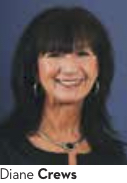Airports Partner with TSA for Private Screening Program

Last year, Orlando Sanford International Airport (SFB) became the 19th airport to join TSA's Screening Partnership Program. Now a private firm performs its security screening for passengers and checked baggage.
| factsfigures Project: Private Security Screening Method: TSA Screening Partnership Program Pilot Project: 2002-2004 Pilot Airports: San Francisco Int'l; Kansas City (MO) Int'l; Greater Rochester (NY) Int'l; Jackson Hole (WY) Airport; Tupelo (MS) Regional Current Participation: 21 airports Sample Participants: Bozeman (MT) Yellowstone Int'l Airport; Orlando Sanford Int'l Airport Respective Private Screening Companies: FirstLine Transportation; Trinity Technology Group Timeline: Airports receive approval/denial within 120 days of application Legislative Background: Program is a requirement of the Aviation Security Act of 2001 Noteworthy Details: Private screeners must maintain same credentials as federal transportation screening officers & may not be paid less; TSA contracts private screeners; private contractors must offer existing federal screeners jobs before hiring new applicants |
 "Privatization creates competition, which in turn begets greater accountability, productivity, innovation, efficiency and customer service at a lower cost," explains Diane Crews, vice president of Finance and Administration for the Sanford Airport Authority.
"Privatization creates competition, which in turn begets greater accountability, productivity, innovation, efficiency and customer service at a lower cost," explains Diane Crews, vice president of Finance and Administration for the Sanford Airport Authority.
Privatization of public services is not a new concept, and has been used widely with great success by all levels of public agencies as well as all branches of the U.S. military for many years, adds Crews.
Officials at Bozeman Yellowstone International Airport (BZN) agree. Using a private contractor allows them to flex the number of screeners scheduled to better match passenger volume, which fluctuates seasonally.
 "We also get spikes during certain times of the day, such as a large morning push and then again in mid-afternoon," notes BZN Deputy Director Scott Humphrey. "The ability of the federal agency to respond was somewhat limited. We really look at the (Screening Partnership Program) from a customer service aspect."
"We also get spikes during certain times of the day, such as a large morning push and then again in mid-afternoon," notes BZN Deputy Director Scott Humphrey. "The ability of the federal agency to respond was somewhat limited. We really look at the (Screening Partnership Program) from a customer service aspect."
The sentiments shared by Humphrey and Crew are not unique. Currently, 21 airports throughout the United States have joined the TSA program and switched to private screening companies (See map above.) That said, this group represents less than 5% of all commercial service airports in the country.
Category IV facilities - particularly in Montana - have been the quickest to embrace the use of private screeners. All five of the various-sized airports selected for the program's preliminary pilot still use private screeners (see list in far left column); but no new Category X or I facilities have joined the program.
How it Began
After 9/11 shook the nation and airport industry, TSA was formed by the Aviation Security Act of 2001. The new federal law passed by Congress also included provisions for a pilot program that would allow airports to use private contractors for passenger and baggage security screening services, operating under the umbrella of TSA's supervision. That was the official start of the Screening Partnership Program.
"The overriding goal of (the Screening Partnership Program) is to ensure that participating airports provide services that meet TSA security and performance standards, and maximize cost savings for taxpayers," says Carolyn Dorgham, the newly appointed director of the program.
TSA's mission, she adds, is to ensure that comprehensive security programs with uniform standards are applied to every commercial airport, whether an airport decides to utilize federal transportation security officers (TSOs) or a private screening workforce.
Airports participating in TSA's Screening Partnership Program are not held to lesser security standards, emphasizes Dorgham. While airports can use different technologies and processes to screen bags and passengers, the standards they must meet are identical.
Moreover, each airport participating in the program is required to have a federal security director on site to oversee its private contractor and ensure that TSA standards are met. "Security remains the responsibility of the local federal security director, and his or her staff at all federalized and (Screening Partnership Program) airports," Dorgham specifies.
After the program's two-year pilot concluded in 2004, participation was opened to all U.S. airports with commercial service. Officials also added formal provisions requiring that private screeners must maintain the same qualifications as TSOs and may not be paid less than their federally employed counterparts.
Airports participating in the Screening Partnership Program do not select their individual screening companies. Contracts are awarded by TSA, based on three criteria: security, screening effectiveness and cost-efficiency.
Montana Airports Make the Switch
With nine airports currently using private security screeners, Montana has more airports participating in the program than any other state. Florida follows with four and California with two.
Bozeman Yellowstone International Airport (BZN) is one of the Montana facilities that have made the switch to private screeners. BZN received its approval from TSA to do so in August 2012 and its contract in June 2014. But the airport's initial steps toward privatized screening began several years earlier, prompted by concerns with TSA staffing and a desire for better response to the ebbs and flows of its passenger traffic.
 "Their attitude has changed, too," says BZN Director Brian Sprenger, referring to TSA's thoughts on the program and why the airport put its initial application on hold. "When the situation changed in 2012, and Congress pushed for more privatization, we took another look at it and felt it was time to pursue it again."
"Their attitude has changed, too," says BZN Director Brian Sprenger, referring to TSA's thoughts on the program and why the airport put its initial application on hold. "When the situation changed in 2012, and Congress pushed for more privatization, we took another look at it and felt it was time to pursue it again."
Humphrey, the airport's deputy director, describes the application process as streamlined, without a lot of hurdles to jump through or cumbersome back and forth with TSA. "We had interaction with a number of vendors along the way, but there was never really any information from the TSA in terms of who it would be," he adds.
Sprenger recalls the transition going well. Airport officials were initially concerned about changing to private screeners in fall 2014, right before the holiday rush; but BZN and its approved vendor, FirstLine Transportation*, collaborated to make the new system work, he notes. The transition began in September and was completed by November.
Approximately half of the screeners previously employed by TSA stayed on at BZN, which greatly reduced the amount of training needed. Program contractors, in fact, are required to offer jobs to existing TSOs before opening positions to new applicants.
The passengers boarding planes at BZN have been pleased too, reports Sprenger. "Over the holidays, the wait time improved," he notes. "The attitude of the screeners is much better, too."
Sprenger characterizes some of BZN's checkpoint fluctuations as typical: At peak, summer or winter, about 700 passengers depart per hour; but the next hour, only 50 will need to depart. "Traditionally, the security checkpoint has been a sore spot for our customers, and we're not seeing that anymore," says Sprenger. "Screening and customer service are not non-exclusive. They can be handled together, and I think that's the benefit we're seeing."
Last year, BZN handled roughly 483,000 enplanements.
Orlando Operations
With nearly 2 million passengers per year, Orlando Sanford International Airport (SFB) also finds TSA's Screening Partnership Program to be a good fit. Virginia-based Trinity Technology Group* currently provides its screening services.
Diane Crews, vice president of Finance and Administration for the Sanford Airport Authority, says that private screening companies offer airports a number of benefits:
• They must prove and maintain their worth every day to retain their contracts.
• They cannot afford to grow complacent and must always strive for excellence to maintain a competitive advantage.
• They must hold employees accountable to satisfy their customers (TSA and airports).
• They can reduce costs to meet the bottom line of profitability; but contract terms, and oversight by the TSA and airport, ensure that service is not compromised for financial gain.
Sanford Airport Authority began considering TSA's Screening Partnership Program in early 2010, and screeners from Trinity Technology Group assumed their posts at the airport this February. Like BZN officials, Crews says that the transition to private screeners went smoothly, with few minor issues. She also notes that the authority received tremendous support from Congressman John Mica and his staff, and advises other airports to enlist their elected officials for help, too.
"This was not only a good move, but the right move for the airport," Crews summarizes. "We believe private screening will result in greater accountability, productivity, innovation, efficiency and customer satisfaction."
* The private screening companies mentioned in this article were asked to provide comments but declined to do so.
|
Privatization Process Airports applying to TSA's Screening Partnership Program undergo a multistep view process and are notified of their status within 120 days. Applications are initially reviewed by a TSA project team, and then by the Screening Partnership Program application chair. Ultimately, the TSA administrator and senior leadership determine which applications are approved and which are denied. According to the federal agency's website, an application should be approved if doing so would not: compromise security, detrimentally affect cost-efficiency or detrimentally influence the effectiveness of passenger/property screening at the airport. TSA also takes into consideration how switching to private screeners would affect new equipment deployments, airport configuration changes and other TSA programs. If an airport's application is denied, TSA must submit a written report to the airport explaining the reasons for its denial, and provide a copy of the report to Congress. More information and applications for TSA's Screening Partnership Program are available at the agency's website: TSA.gov. |
FREE Whitepaper
Fairbanks International Airport Baggage Transport Conveyor Enhanced With Mod Drive™ System
Airports face a host of unique industry challenges, such as meeting efficiency regulations and seeking out the best maintenance practices to reduce costs and keep operations flowing. In today’s current economic climate, any potential cost savings can go a long way.
In 2019, Alaska’s Fairbanks International Airport (FAI) sought to modernize its equipment and operations. They were dissatisfied with the performance of the gearmotors on their baggage transport conveyors and began searching for new suppliers. Regal approached FAI with a solution that could improve equipment performance and simplify maintenance, with the added benefit of energy cost savings: the Hub City® MOD Drive™ system.
This white paper discusses the hardware deployed, the test results and the annualized expectations for ROI.








